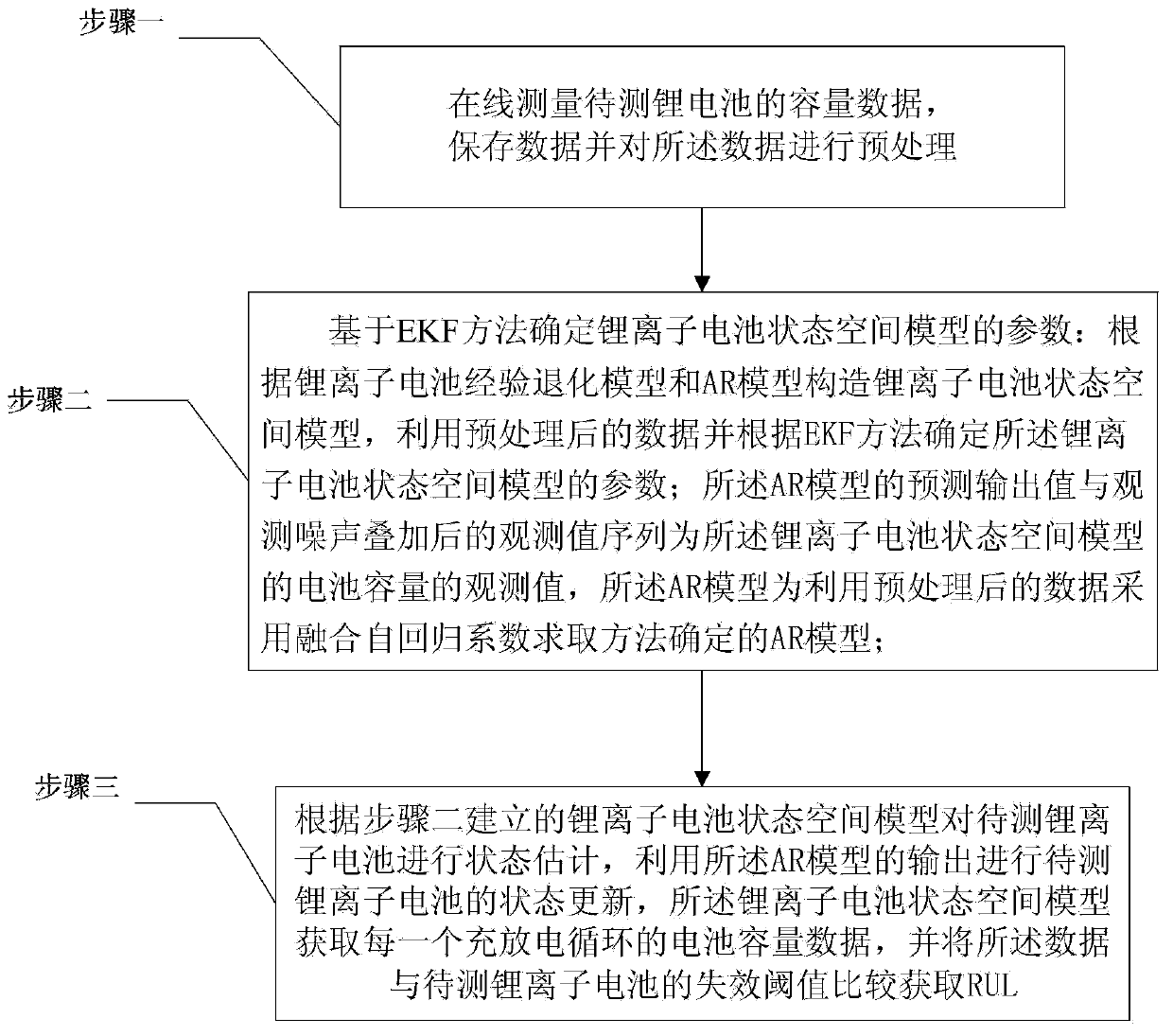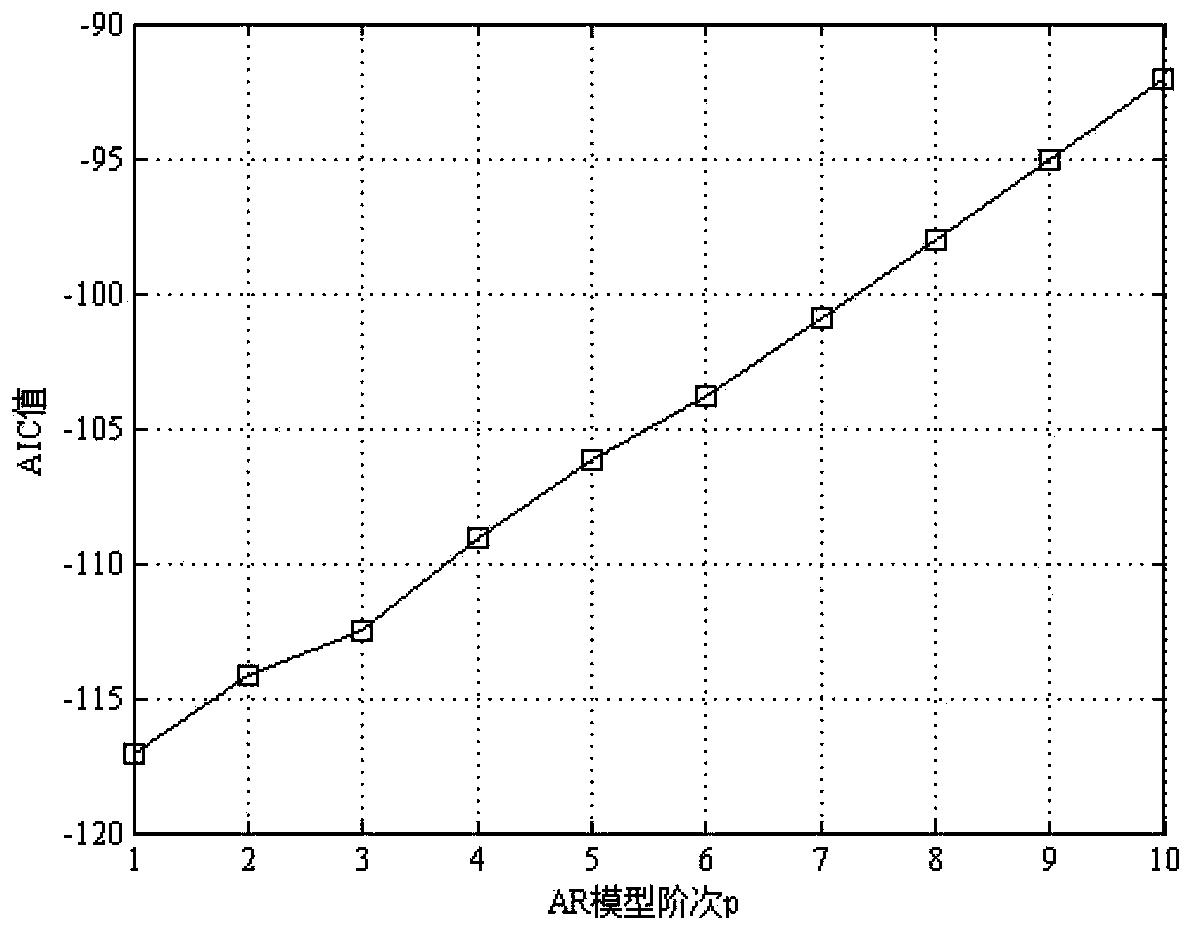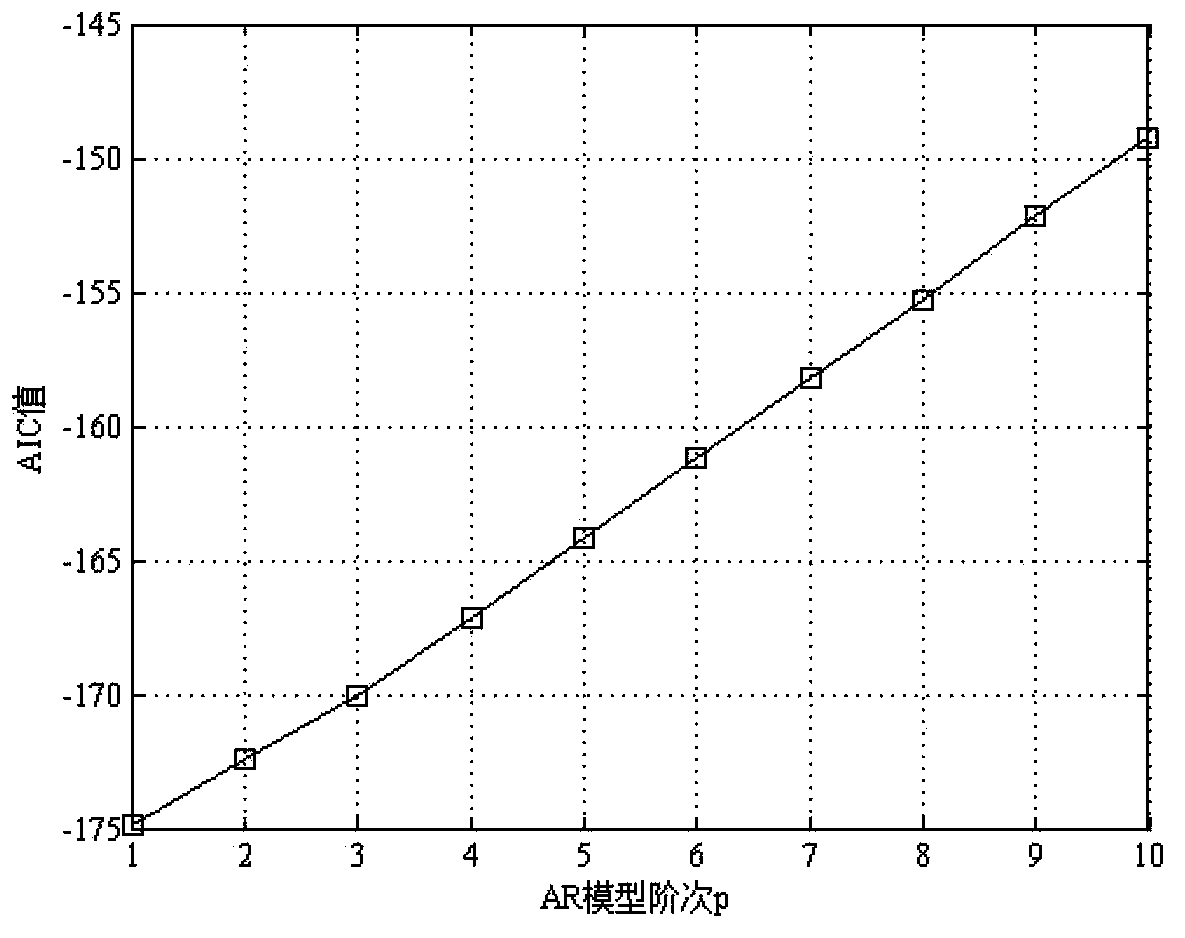Method for predicting cycle life of fused lithium ion battery based on EKF (Extended Kalman Filter) method and AR (AutoRegressive) model
A lithium-ion battery and AR model technology, applied in the direction of measuring electricity, measuring devices, measuring electrical variables, etc., can solve the problem of low adaptability and achieve the effects of improved adaptability, reduced relative error, and improved prediction effect
- Summary
- Abstract
- Description
- Claims
- Application Information
AI Technical Summary
Problems solved by technology
Method used
Image
Examples
specific Embodiment approach 1
[0014] Specific implementation mode one: combine figure 1 Describe this embodiment, the EKF method and AR model fusion type lithium-ion battery cycle life prediction method based on this embodiment described, it comprises the following steps:
[0015] Step 1: Measure the capacity data of the lithium battery to be tested online, save the data and preprocess the data;
[0016] Step 2: Determine the parameters of the lithium-ion battery state space model based on the EKF method:
[0017] Construct lithium-ion battery state-space model according to lithium-ion battery empirical degradation model and AR model, utilize the data after pretreatment and determine the parameter of described lithium-ion battery state-space model according to EKF method; The prediction output value of described AR model and observation The observed value sequence after the noise superimposition is the observed value of the battery capacity of the state space model of the lithium-ion battery, and the AR m...
specific Embodiment approach 2
[0019] Specific embodiment 2: This embodiment is a further limitation of the method for predicting the cycle life of a lithium-ion battery based on the EKF method and the AR model fusion described in the specific embodiment 1.
[0020] The method for preprocessing the data in the step 1 is:
[0021] Eliminate the singular points in the data, and smooth the trend of the capacity regeneration phenomenon with too large amplitude.
[0022] The singular points include data with large measurement errors and erroneous data, and the phenomenon of capacity regeneration with excessive magnitude is shown in the curve as several capacity rising parts in the overall downward trend, that is, the glitch part in the falling curve.
specific Embodiment approach 3
[0023] Specific embodiment three: this embodiment is a further limitation of the cycle life prediction method for lithium-ion batteries based on the EKF method and AR model fusion described in specific embodiment one,
[0024] In step 2, the described lithium-ion battery state-space model is constructed according to the lithium-ion battery empirical degradation model and the AR model, and the method for determining the parameters of the lithium-ion battery state-space model according to the EKF method using the preprocessed data includes the following steps :
[0025] Step A: Empirical Degradation Model Based on Li-ion Batteries Construct a state-space model of the parameter estimates for the degradation model:
[0026] a k = a k - 1 + ...
PUM
 Login to View More
Login to View More Abstract
Description
Claims
Application Information
 Login to View More
Login to View More - R&D
- Intellectual Property
- Life Sciences
- Materials
- Tech Scout
- Unparalleled Data Quality
- Higher Quality Content
- 60% Fewer Hallucinations
Browse by: Latest US Patents, China's latest patents, Technical Efficacy Thesaurus, Application Domain, Technology Topic, Popular Technical Reports.
© 2025 PatSnap. All rights reserved.Legal|Privacy policy|Modern Slavery Act Transparency Statement|Sitemap|About US| Contact US: help@patsnap.com



